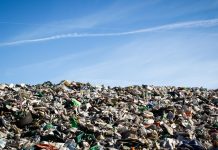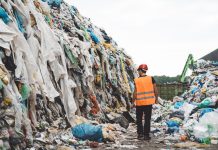Juri Martin from EuroAcademy offers his expert thoughts on environmental approaches to regional security
In many regions of the world, the renewable natural resources are being utilised faster than their natural rate of renewal and the regional environment is being abused in many other important ways as well. Moreover, the ecogeographical regions (ecoregions, regional approach, spatial planning) of the world are not generally delimited in synchrony with the political boundaries of the world.
The concept of environmental security
Two major prerequisites must be satisfied to achieve environmental security:
A protection requirement, that is, the quality of the human environment must be safeguarded;
A utilisation requirement, that is, any exploitation (harvesting or use) of renewable natural resources must be carried out on a sustaining basis.
The problems associated with environmental security fall into a number of more or less distinct categories and sub-categories:
- Problems associated with the protection and conservation of the environment:
Avoidance of vandalism (wartime or other non-remunerative destruction);
Avoidance of excessive pollution, that is, pollution in excess of the natural renewal or cleansing processes and;
Avoidance of any permanent anthropogenic intrusion whatsoever in a modest number of special areas.
- Problems associated with utilisation of the environment (ecosystem services):
Avoidance of utilisation at rates beyond long-term sustainability, that is, in excess of maximum sustained yield or maximum sustained discard and;
Avoidance of utilisation – in the event of past abuses – at rates that will prevent recovery of the degraded environment (recovery, moreover, that may well require human assistance).
The problems associated with environmental protection, conservation and utilisation will, of course, vary in detail depending upon the nature of the resource. Resources can conveniently be divided into the following categories:
Non-extractive resources, including the land and its soil, water and the atmosphere and;
Extractive resources, including non-renewable resources and renewable resources.
It must be stressed that all utilisation of the renewable natural resources must be carried out on a sustained-yield basis; and that all disposal of waste must be carried out on a sustained-discard basis (circular economy). Without an inflexible commitment to the sustainable development of resources and the sustainable disposal of waste, there can be no environmental security.
Protecting the quality of the human environment implies the prevention of soil erosion, of air pollution and of water pollution in excess of levels that would jeopardise the public health. It further implies the maintenance of representative habitats in their natural state and the prevention of species extinctions. In those instances where environmental damage or deterioration of some sort is already prevalent, the protection of the human environment implies actions that would restore the damage, at least in so far as this remains possible.
Please note: this is a commercial profile
Mr Juri Martin
EuroAcademy











